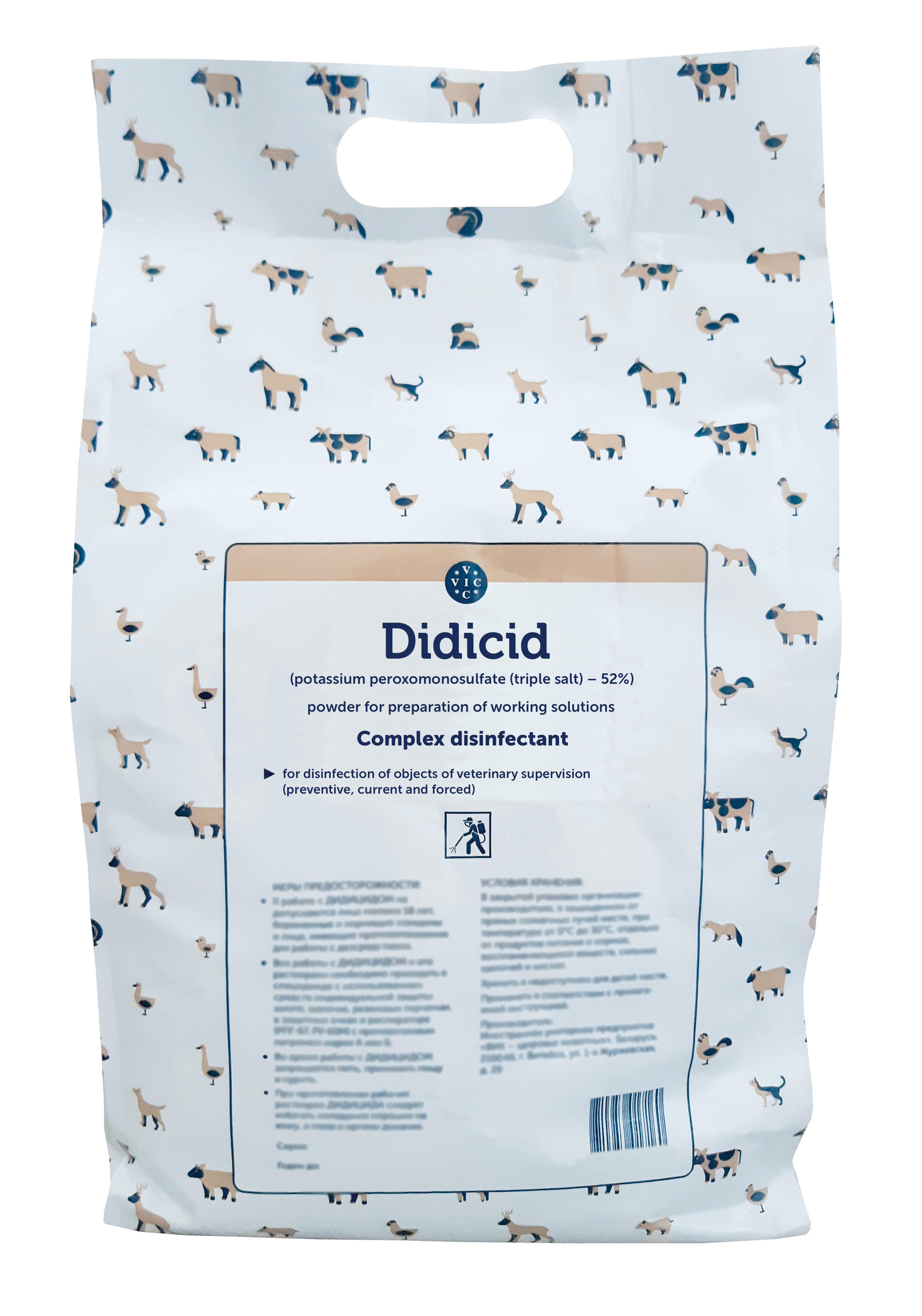Didicid
Disinfectant
Specification
Didicid has a broad spectrum of antimicrobial activity and is active against bacteria, viruses and fungi. Didicid has a bactericidal effect on pathogens that belong to the group of low-resistant (group of Escherichia coli bacteria – Escherichia, Citrobacter, Enterobacter), resistant (group of staphylococci – St. aureus, St. epidermatis, St. saprophiticus) and highly resistant (group of mycobacteria) to chemical disinfectants. Didicid acts as a strong oxidizer. Organic acids in combination with an inorganic buffer create an acidic environment and optimize the activity of potassium peroxomosulfate, in this regard, the product is also effective in hard water, in the presence of organic contaminants and at low ambient temperatures. 161 Disinfectants Working solutions do not cause skin irritation, do not have corrosive activity, do not have a negative effect on the materials of the treated surfaces (does not cause corrosion of stainless steel and aluminum, acid-resistant plastics, rubber, enamel, glass). According to the degree of impact on the body, DIDICID is classified as a moderately hazardous substance. In the recommended concentrations, it does not have a sensitizing and local irritating effect on the skin, slightly irritates the mucous membranes. According to the degree of impact on the body, working solutions are classified as marginally hazardous substances. After application, the product is easily washed off and quickly decomposes in wastewater to inactive components and, as a result, does not pollute the environment.
Indications
Didicid is a pink powder with a slight specific odor, soluble in water. Didicid is used for preventive and forced (current and final) disinfection of objects of veterinary supervision in infectious diseases of bacterial and viral and fungal etiology
Composition
1 g contains 520 mg (52%) of potassium potassium peroxomonosulfate (triple salt) and excipients (surface active substance – sulfonol, organic acids, buffer components (sodium chloride, sodium hexametaphosphate), dye, aerosil A380 and flavouring).
Dosage
Disinfection with Didicid working solutions is carried out in the absence of animals by a wet method (irrigation, wiping, immersion) or aerosol. For preventive and forced (current and final) disinfection for infections of bacterial (excluding tuberculosis), viral and fungal etiology, pathogens of which belong to 1 (low-resistant) and 2 (resistant) groups of resistance to disinfectants, wet or aerosol precleaned surfaces and equipment, as well as in disinfection barriers and mats, a 1% working solution of the product is used. For thermal aerosol disinfection (preventive and forced) of livestock and auxiliary premises, incubators, feed processing and storage facilities, slaughterhouses, a 4% working solution of the product is used. To prepare a 1% working solution, 100 g of the product is dissolved in 10 L of preferably warm water. To prepare a 4% working solution for thermal aerosol disinfection, an aerosol stabilizer (monopropylene glycol, etc.) is first mixed with water at the rate of 15 parts of the stabilizer per 85 parts of water, then 4 parts of the Didicid are added to the resulting solution. To prepare working solutions for the purpose of preventive and forced disinfection at low temperatures (up to minus 18° C), the required amount of Didicid is taken and dissolved in 60% of the warm water required for the preparation of the solution. Then the volume of the solution is brought up to 100% by propylene glycol.

